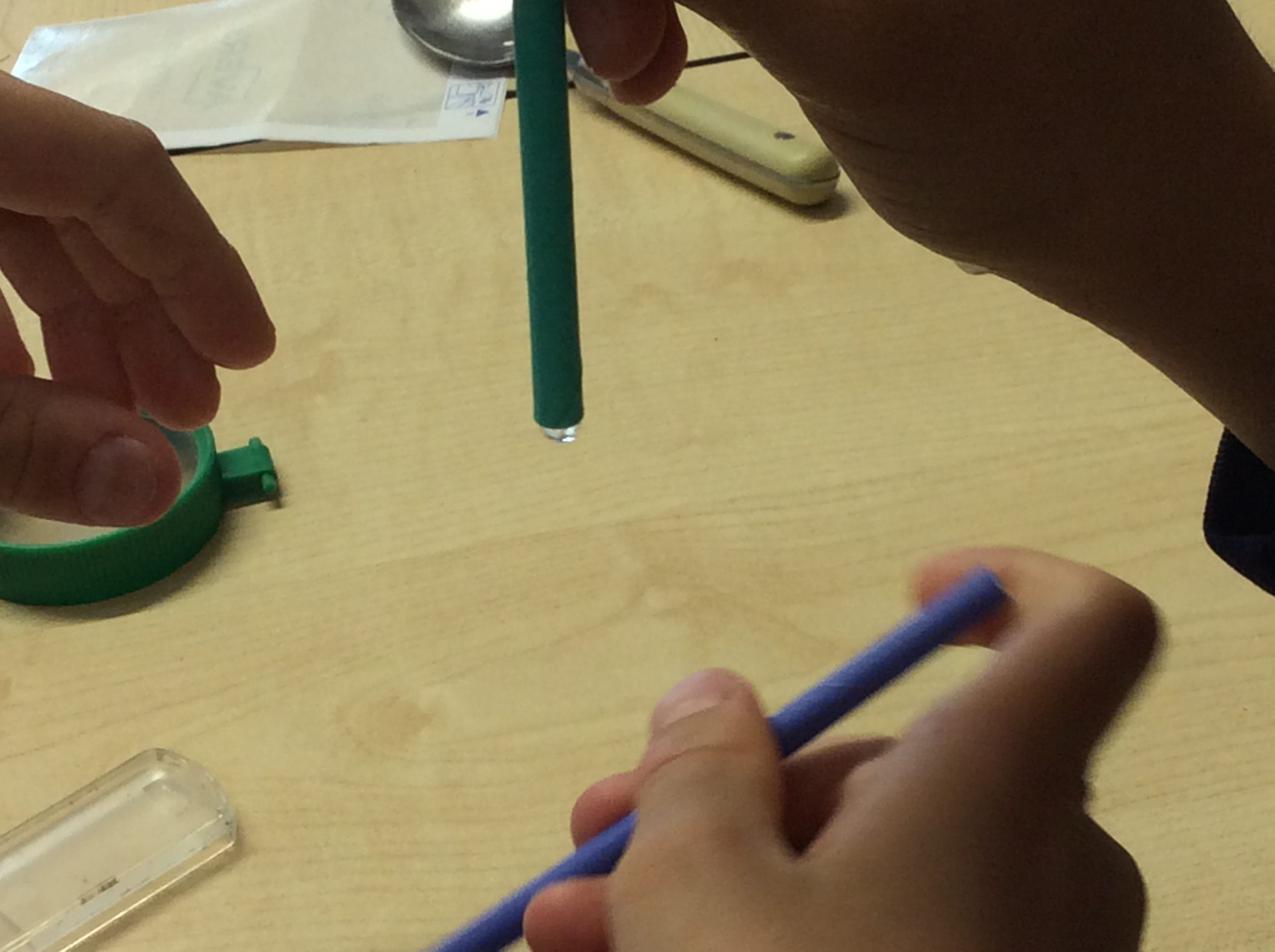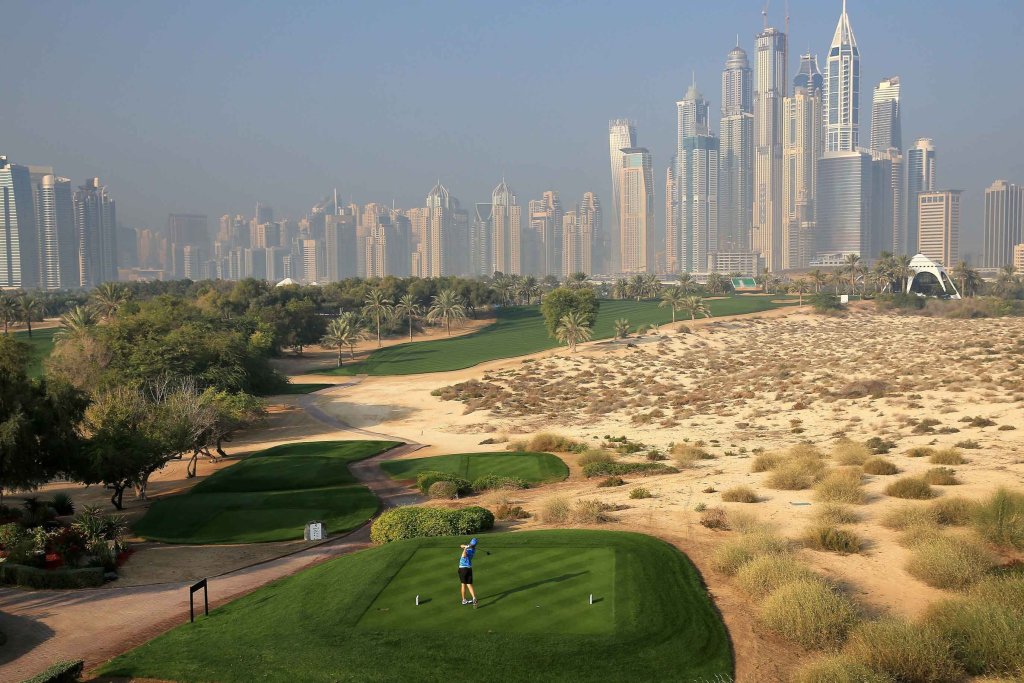Topic 6: Water
 Brief Encounter
Brief Encounter
Think about the place of water in your lives

1. Collect from the teacher a small bottle-top cap full of fresh water.
Carefully carry it to your table, and be sure not to waste any, as it is a limited resource and there is no more to share
2. With your partner, find a way to look at a droplet of water (you might need a straw).
- What do you see?
- What do you feel?
- What do you think?
- What does the water tell you?
3. Water is part of many rituals, celebrations and festivals.
Can you think of any in your life? Why do you think water is so often used in this way?
Reflecting on the power and preciousness of water
Opportunities for Embracing Uncertainty
There is a great opportunity here to use the compound, water, as the stimulus to evoke its power that draws humans to it, as if beyond our control, and how it is fundamental for existence and survival, as well as emotional and spiritual well-being. By enabling students to attend very closely to water, in ways that they may not have done since they were very young (if at all), it allows them to reflect on its mysteries and preciousness that is not easily explained.
Opportunities for All Students
This invitation is suitable for students of all ages as it can be adapted to different levels of complexity. All are invited to ‘play’ with the water. Some can explore multiple personal experiences of engaging with water in their wider lives; others can act as researchers to find out and reflect on the use of water for different religious and celebratory purposes, and its value as a spiritual symbol. They might also investigate how water droplets behave on different materials.
Opportunities for Creativity
As well as thinking creatively about the different ways in which water is used spiritually across the globe, students may also use this activity to ponder why ‘water’ is so special. Links can be made to the scientific properties of the compound: it exists in three different states (gas, solid and liquid); it cannot be made or lost; it is colourless, odourless and tasteless; it defines our Celsius temperature scale of 0-100 degrees; it is what scientists look for in other planets as an indicator of potential life.
Opportunities for Linking to Climate Justice
This activity offers students from different religious and cultural backgrounds the opportunity to share something of how water is important to their lives. This exchange requires others to listen, and for everyone to draw out the similarities and differences, and to consider what might (if anything) be the shared experience of water. Links can also be made to the words used for water in different languages (see Topic 7: Kelp for examples).
 Sensory Encounter
Sensory Encounter
Looking closely at an image

This image portrays the Emirates Golf Club which was presented with the Efficient Use of Resources Award at the prestigious International Association of Golf Tour Operator (IAGTO) Awards held in Lake Como, Italy, in 2015.
- What do you notice about the setting for this golf course?
- What do you notice about the different types of terrain in the picture?
- What does the image make you think of?
- How does the image make you feel?
The power of photography to invite questions
Opportunities for Embracing Uncertainty
Photographs provide an opportunity to engage students in questioning, theorizing, thinking critically, and noticing unexpected tensions in the scenes portrayed. In the image, the students might notice stark contrasts that raise questions for them about the setting.
A broader issue that might extend the discussion is the uncertainty of water quality: caused by the discharge of sewage into the sea and agricultural runoff into rivers, for example. This issue can evoke community passion, conflict and resistance through the sharing of information (e.g. Surfers Against Sewage www.sas.org.uk), and government regulator intervention through the issuing of fines. Students might consider their own felt response and their possible individual or community action.
Opportunities for All Students
Younger students might notice contrasts and have questions, such as why is there so much sand and why are the buildings so tall? Other students might begin to engage more with ecological and social issues: they might make links to water, biodiversity and climate change, for example.
For some students, it might be a leap to jump to a context with which they are unfamiliar. In which case, we suggest first introducing a local example that exemplifies similar issues. Or else, to show a film about local drought and to invite them to respond by reflecting on anything that feels important to them. Here is an example of a film: https://www.youtube.com/watch?v=oL2TFdLDFGA&t=10s
Opportunities for Creativity
What does the image show us? This activity invites students to think about the power of images, through paying attention to the details and how it might speak to each of us. Can students say what they are drawn to in the image and why? How would deleting particular details of the photo tell a different story? (This activity links to the one on the power of advertising in Topic 4: Food Shopping.) Some students could take photographs of places around the school grounds or locally that tell a ‘sustainability’ story, which they could then show and invite a response from their peers.
Opportunities for Linking to Climate Justice
Students might think about who will use this golf course and who will not. This activity allows for a more complex engagement with climate justice, that can include both 1) the binary between the Global North and South in carbon emissions (see these useful charts: https://theconversation.com/climate-change-is-a-justice-issue-these-6-charts-show-why-170072 – this relates to Topic 8 Wind Energy), as well as 2) The unequal distribution of resources within some Global South contexts. For example, The World Inequality Lab reports that the most unequal region globally is the Middle East and North Africa, where the richest 10% take around 58% of the income, compared to Europe where the comparable figure is 36% of income (see: https://wir2022.wid.world/executive-summary/). Links can also be made to the UNESCO Sustainable Development Goals, especially No 6: ‘Clean Water and Sanitation’ (https://sdgs.un.org/goals/goal6), which sets out drinking water, sanitation and hygiene targets.
 Deliberative Encounter
Deliberative Encounter
Consider environmental scenarios from different perspectives
Here is some information about the Golf Club Environmental Award.
Challenges for the golf course:
- Low rainfall
- High humidity (water evaporates)
Solution made by the golf course:
- Careful storage of rain
- Recycled sewage water
- Water pumped through underground pipes to target watering
- Computer to monitor and reduce over-watering
It is now your turn to consider whether to give the golf course the award.
1. Form five interest groups as follows:
- Gold club owners
- Brighton golf tourists
- Golf ground staff
- Environmentalists
- Hares
2. In each group, consider what are your thoughts, concerns and questions about giving this golf course an environmental award. A separate group of ‘jurors’ will come around and listen to your discussions: they will make notes, but not say anything.
3. Each group will then present their case to the jurors, who will make the final decision about whether or not the golf course deserves the award.
Deliberating different positions and vested interests
Opportunities for Embracing Uncertainty
This activity enables students to grapple with the competing interests of different stakeholders attached to the golf course. There is no obvious answer about whether the course should be given an environmental award given the multiple tensions involved in this decision. The activity offers the opportunity to think beyond human needs, with the inclusion of hares (which are indigenous to this region).
Opportunities for All Students
For early years students, this encounter could form the basis of a discussion of how to improve the school grounds: what changes would the students make to the school outdoor environment? What would they like to introduce? For example: vegetable patch, outdoor learning area, scooter racks, sandpits, recycling bins, etc. This will require them to engage with different ideas and views.
Some students may lack knowledge on which to deliberate the position of their interest group. For example, they may think hares enjoy grass without considering the effects for them of biodiversity loss: they might benefit from being able to ask questions of the teacher or others. Other students will have more knowledge or could use the internet to research in depth.
Opportunities for Creativity
Adaptations for the golf course have involved enterprising creative use of technology to respond to the challenges of a water denuded environment. The activity requires students to place themselves in another role and to use their imaginations. They also have to think how to convince the jurors of the veracity of their position. Students might also discuss how each of the aspects that led to the award can now be used to improve the quality of life in other parts of the world: what other uses do the students think these advancements can be applied to? This article about the award might be useful pre-reading: https://golfbusinessnews.com/news/management-topics/emirates-golf-club-receives-sustainability-award/.
Opportunities for Linking to Climate Justice
This award highlights how technology can be used to address environmental challenges throughout the world. How can the initiatives used to build and irrigate this golf course be used to improve the lives of people across the globe? Which areas of the world would benefit from these adaptations in water usage and recycling? Students could be encouraged to reflect on how innovative uses of technology might be used to improve the lives of people locally and globally, including in areas of water shortage. Other students might reflect on the tensions between the desires of affluent tourists (whether from the same or other countries) and uncertain local impacts. For example, the golf course might bring immediate economic benefits but acerbate long-term negative climate effects.
 Beyond the Classroom Encounter
Beyond the Classroom Encounter
What can we all do to conserve water?
Create a water catcher to help conserve and recycle water in your home or outdoor space.
- Where is there excess water when it rains?
- Where is there an excess of water used in your home?
- How might it be captured and stored?
- What recycled materials might you use?
- What could the water be used for?
Reflecting on the power and preciousness of water
Opportunities for Embracing Uncertainty
This activity supports children’s citizenship and environmental awareness, which is an important role for schools within a democracy and for the purpose of educating students to be able to contribute to a sustainable world. As students build their water catchers, they can consider how conserving water makes them feel and what it makes them think about.
Opportunities for All Students
This activity can be used with students of any age: the scaffolding would be greater for younger children both at school and with their families if building this at home. There are opportunities for all students to think about what materials can be used, measuring the volume of water collected and, for older students, predicting how much water will be collected. Students working at a higher level can use different technological solutions to address the challenge.
Opportunities for Creativity
This activity invites discussion about why catching water may be desirable, as well as the challenges involved and how to overcome them. The students might do an initial audit of how water is used in school and make recommendations for change. Students can also consider: which designs might catch the most water; where should they place water catchers around the home or school; how will they make sure they do not get moved or damaged; how will they monitor, collect and use the water?
Opportunities for Linking to Climate Justice
Some arid areas of the world have always had to live with water uncertainty, and they have developed their own cultural and context specific strategies. For example, the San people of the Kalahari Desert have used empty ostrich eggs to store water, which they buried and marked the spot with a feather so that they could find it later. You can find an image and more information here: https://www.britishmuseum.org/collection/object/E_Af1910-363

